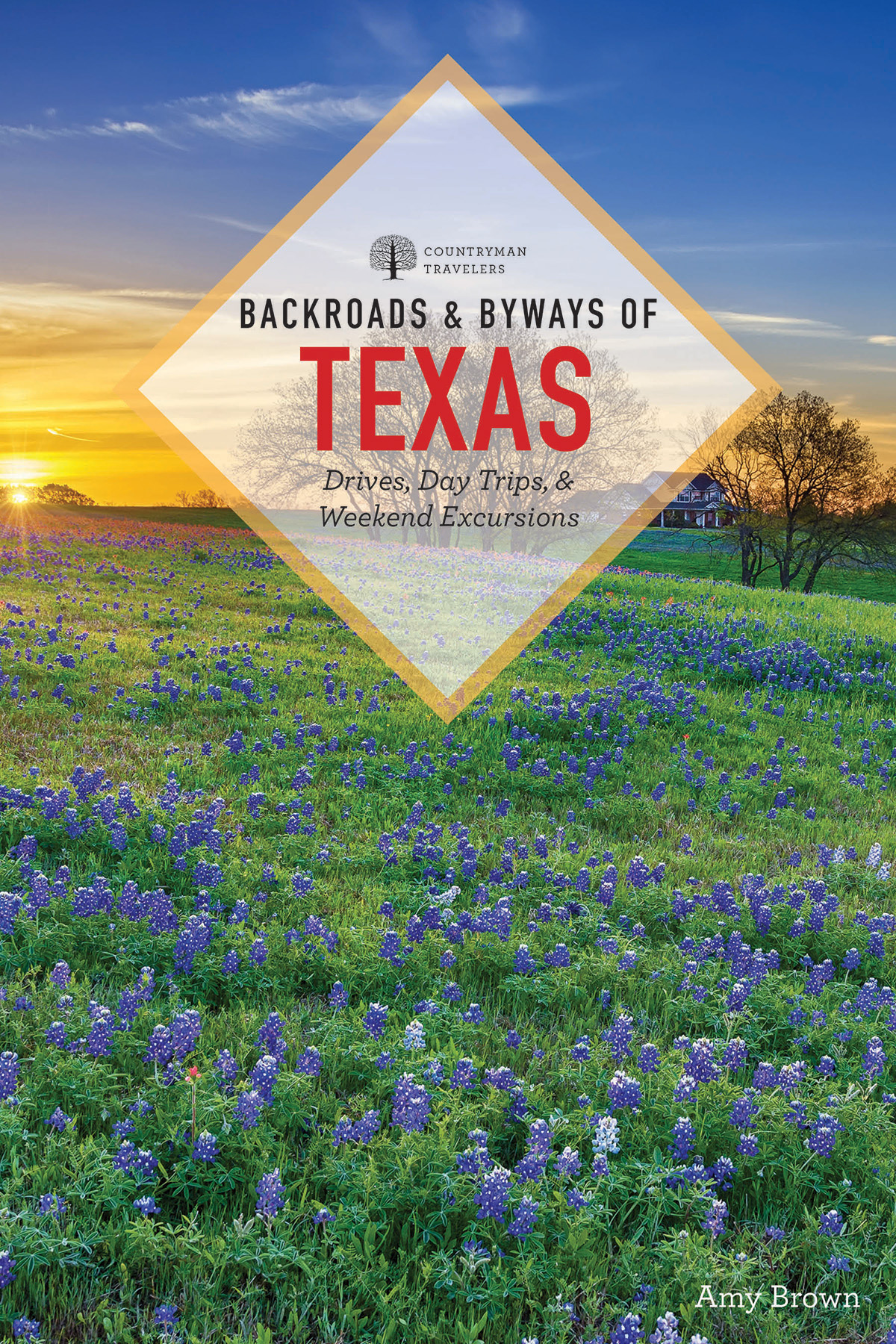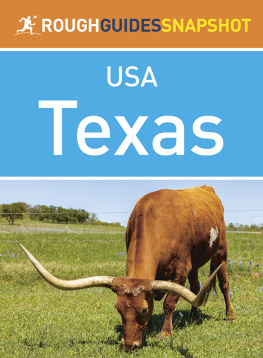Contents
Guide
Page List


Contents
I have said that Texas is a state of mind, but I think it is more than that. It is a mystique closely approximating a religion. And this is true to the extent that people either passionately love Texas or passionately hate it and, as in other religions, few people dare to inspect it for fear of losing their bearings in mystery or paradox. But I think there will be little quarrel with my feeling that Texas is one thing. For all its enormous range of space, climate, and physical appearance, and for all the internal squabbles, contentions, and strivings, Texas has a tight cohesiveness perhaps stronger than any other section of America. Rich, poor, Panhandle, Gulf, city, country, Texas is the obsession, the proper study and the passionate possession of all Texans.
John Steinbeck, 1962
T exas is the perfect backdrop for adventure. With vast spaces, diverse cultures, and shoot-from-the-hip sincerity, the Lone Star State is the ultimate road trip fantasy. To travel Texas is to experience the open road, with the wind in your hair and convention at your back. Texas has plenty of destinationsexquisite San Antonio, lively Austin, and fascinating Fort Worth, among many othersbut there is, as a glance at the map makes clear, a whole lot of in-between. The routes outlined in the following pages offer a sampling of this huge state and the essence of the regions they traverse. For this book Ive gone slightly off the beaten path, highlighting places of natural beauty, cultural heritage, and historical significance, in the hopes that your trip through Texas, like mine, will become a journey.
Though each of the routes suggested is accessible from at least one major Texas city, the cities themselves are not generally included. While Texas cities are certainly worth visiting, they are also books unto themselves (See Countrymans Explorers Guide Austin, San Antonio & the Hill Country for just a few examples). I may dart into several cities along the way to visit a museum or historical site of particular interest, but I never tarry long.
Distances in Texas can be deceptive. Driving in the Hill Country, just west of Austin and San Antonio, it is easy to make stops every 30 minutes or so, while in West Texas you can drive for hours with the distinct feeling that you are getting nowhere fast. To help you keep perspective and better plan your excursion, I have noted the mileage of the segments and the whole of each route. Whether you are planning to drive the coast for the day or take the family camping in Big Bend, this book will be a knowledgeable and helpful companion.
Founded on ambition, guts, and sheer force of will, Texas is the only state in America to enjoy a history of sovereignty, and, in many ways, Texas is as independent, wily, opinionated, self-sufficient, and wide open now as at any time in its past.

Evidence places human habitation in the region as far back as 11,000 years. Until the sixteenth century, Texas was sparsely inhabited by various groups of Native Americans, who lived as a mix of settled groups and nomadic tribes. The arrival of the Spanish marked the beginning of colonization, and in 1519, Spain claimed Texas as part of its massive holdings in Mexico. However, the countrys rule existed primarily on paper and it failed to establish a lasting presence or control over the region.
In 1685, the French attempted to expand the western border of Louisiana by claiming Texas as their own, a stand foiled almost immediately by the Spanish, who in 1690 reclaimed the land theyd lost. This time, serious about expanding its empire, Spain set about establishing misiones (missions) to convert Native Americans to Christianity and the ways of Spanish citizenship, and presidios (forts) to protect these fledgling communities. While the missions did have a huge impact on the lives of Native Americans, Spain was unable to keep its foothold in the new land. When Mexico won independence from Spain in 1821, Texas passed to Mexican rule and into an era of pioneer life, as hopeful immigrants tried their hand at claiming the frontier.

TEXAS PRIDE
Since the seat of Mexican authority was distant, the new Texans enjoyed a measure of self-rule. When Mexican general Santa Anna set aside the Mexican Constitution in the 1830s, in effect declaring himself king, the seeds of the Texas Revolution were planted. Texas Revolutionaries sparred with Mexican troops in Gonzales, the Alamo in San Antonio, and, finally, in San Jacinto. This final battle, on April 21, 1836, won the state its independence, and the Republic of Texas was born.
Texas sheer size, wealth of resources, and status as a border state all contributed to its attractiveness as an acquisition by world powers. On December 19, 1845, Texas joined the United States of America, passing from a nation to a state. Sixteen years later, the Civil War tore the unstable nation apart and Texas, though advised by Governor Sam Houston to remain neutral or reestablish a Republic, sided with the Southerners. The flag of the Confederacy flew over Texas from 1861 to 1865, to be replaced in 1865 by the flag of the United States.
With 268,601 square miles, Texas is ranked behind Alaska as the second largest of the states in the Union. Home to well over 20 million people, it is the second most populous state after California, and with Houston, it can claim the fifth-largest city in the country. Much of the population of Texas clusters along I-35, running from Dallas through Austin and San Antonio on its way to Mexico. But Texas urban history, the rise and growth of its cities, is largely a story of the twentieth century. The deeper roots of the states history, peoples, and culture are firmly planted in the rural landscape that is its greatest hallmark.
Pests
F or whatever reason, pests love Texas and thrive in its temperate climate despite efforts to control them. The truth is that many serve an important ecological function and most are harmless, but there are a few pests that should have you watching where you sit, step, or stand.
FIRE ANTS
The biggest pests in Texas are the fire ants, for which you will frequently see warning signs posted. Fire ants tend to make their mounds in sunny open fields and parks, by the side of the road, and at the bases of trees and other objects, such as picnic tables. When their nest is disturbed, they swarm and deliver many simultaneous stings, which are similar to bee stings in look and feel. Usually no medical intervention is required, but as with bee stings, a small percentage of the population may have a severe allergic reaction, in which case emergency medical care is essential. The only prevention is avoidance, so watch where you sit and stand and be especially aware with small children.
SNAKES
Snakes are common in Texas, but of the seventy-two native species and subspecies, only fifteen pose any threat to humans. Generally, snakes keep to themselves and do not tend to initiate interactions. If you have the unfortunate experience of being bitten, seek medical attention.
















